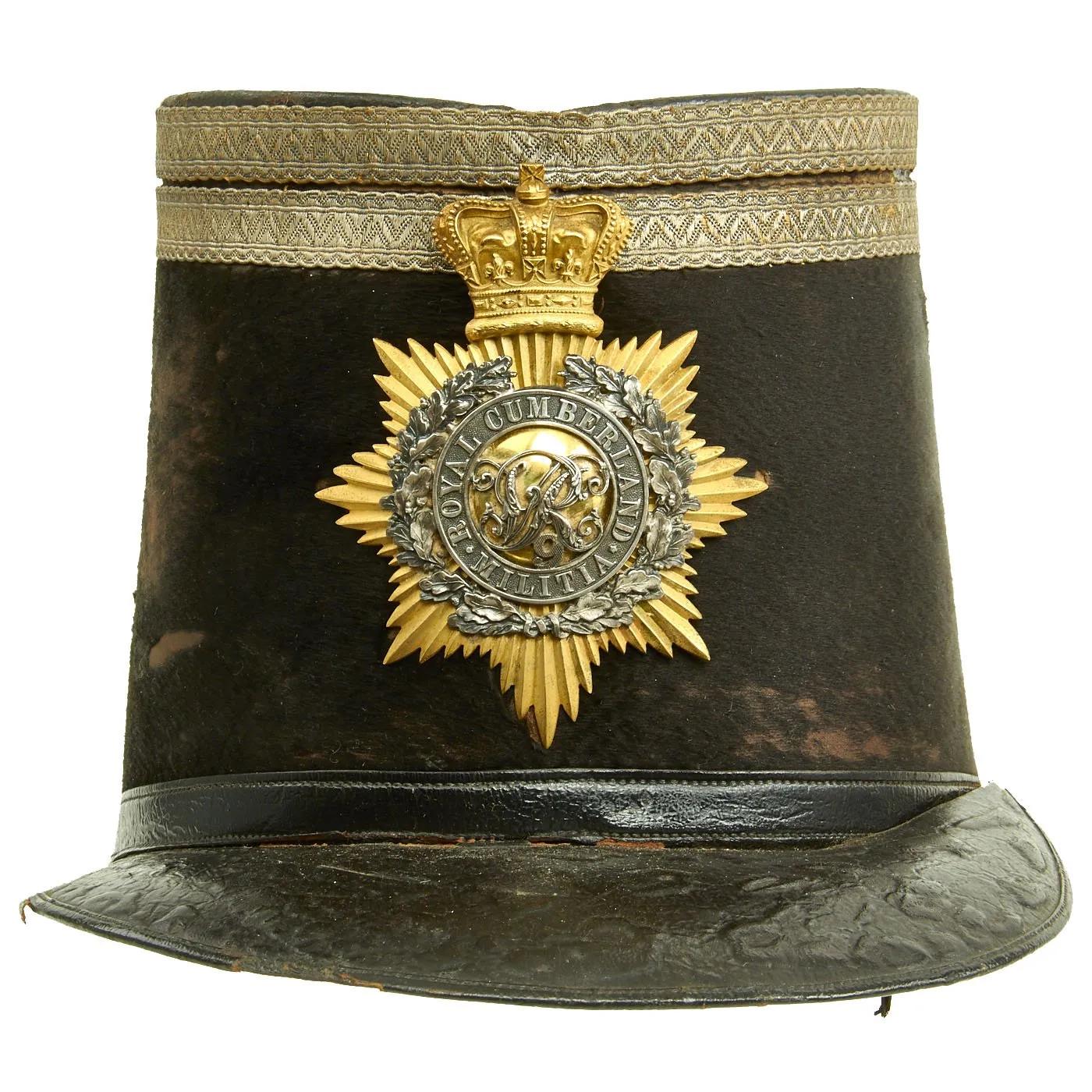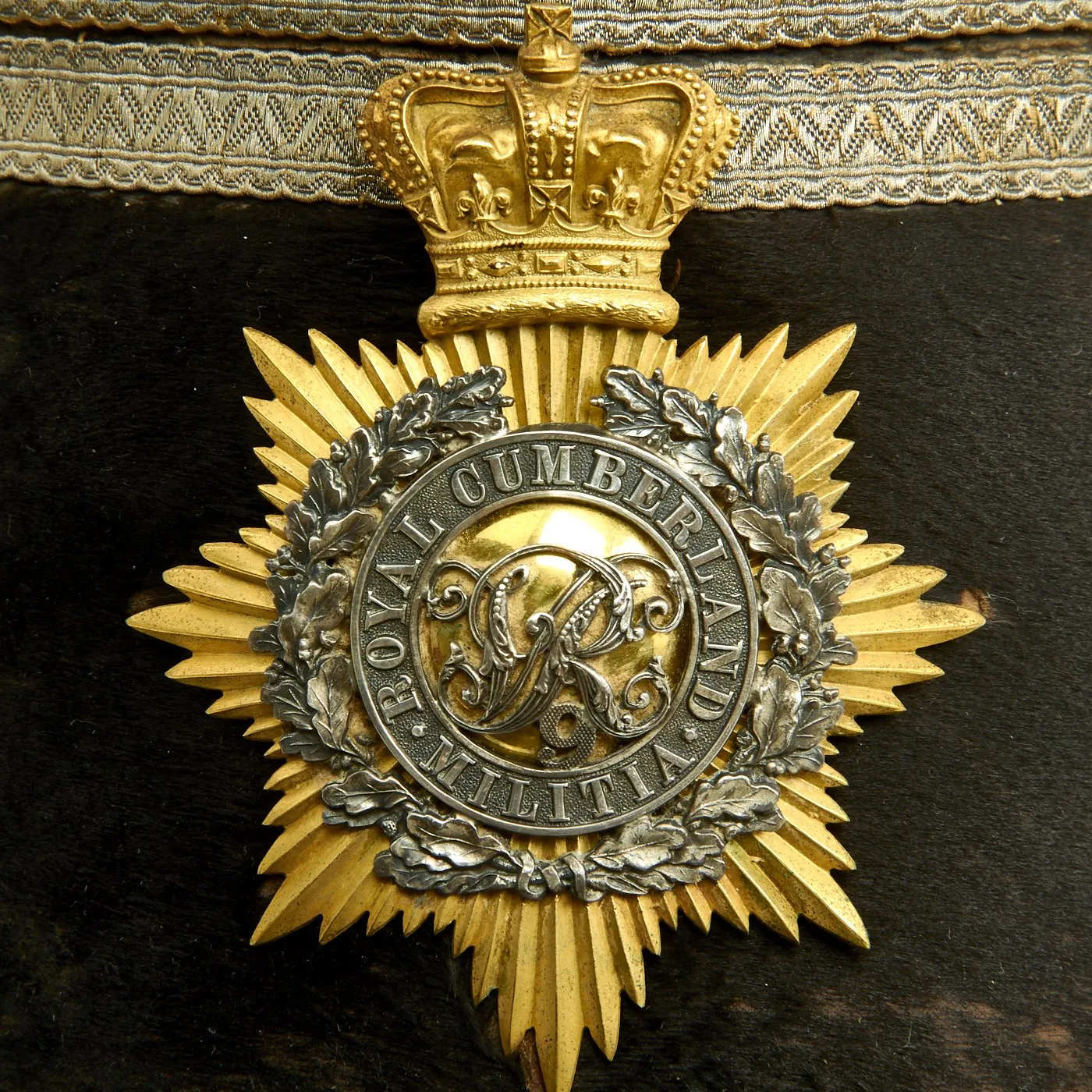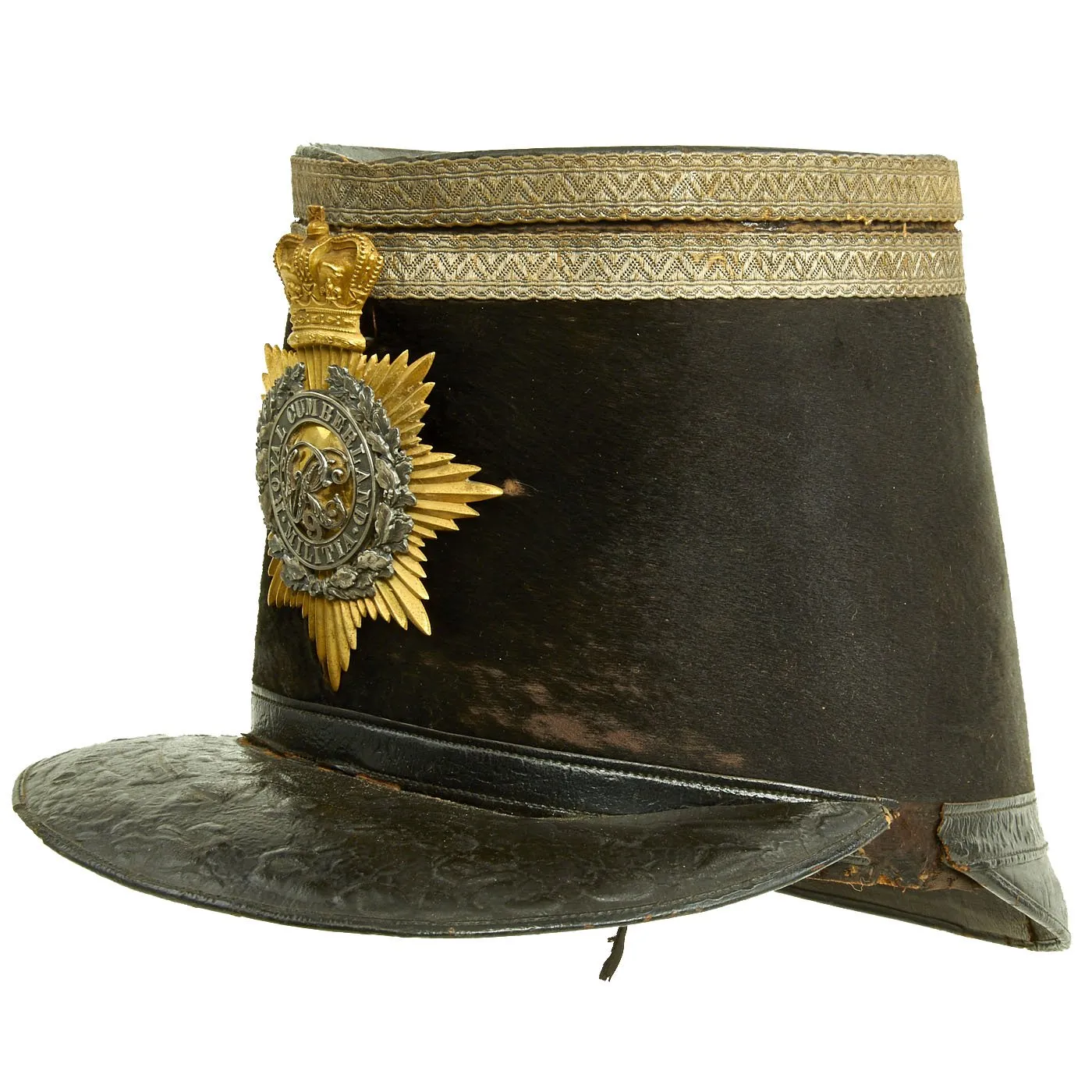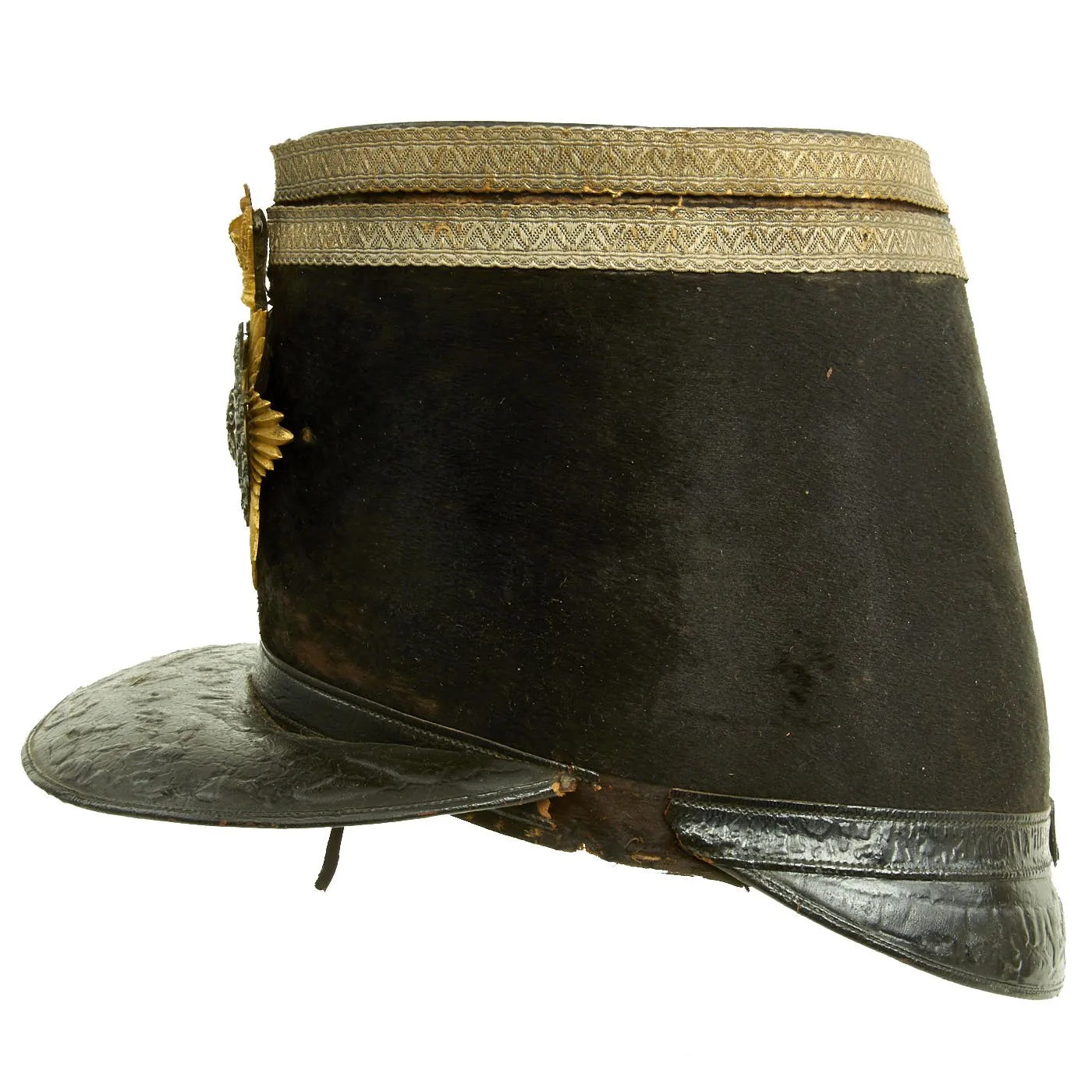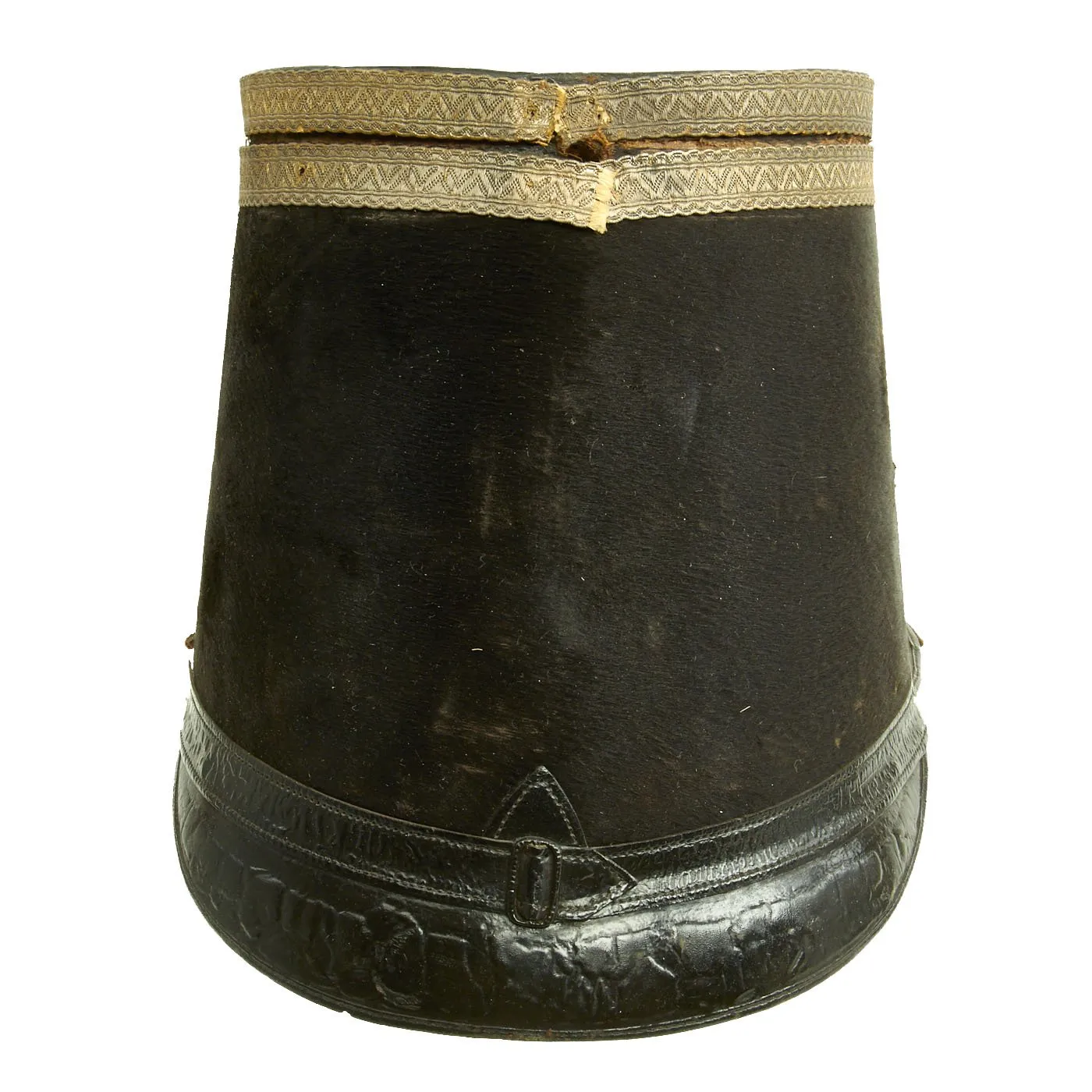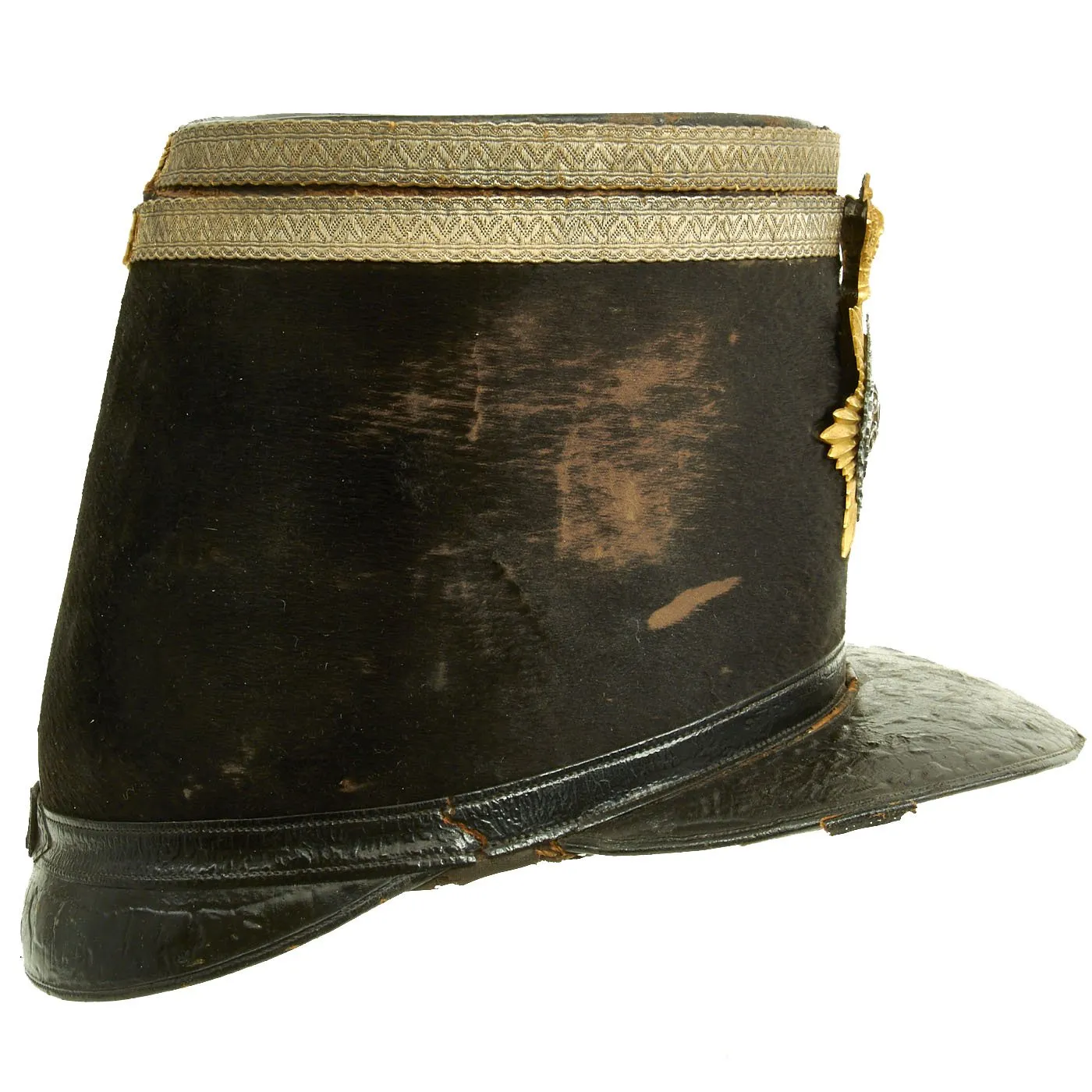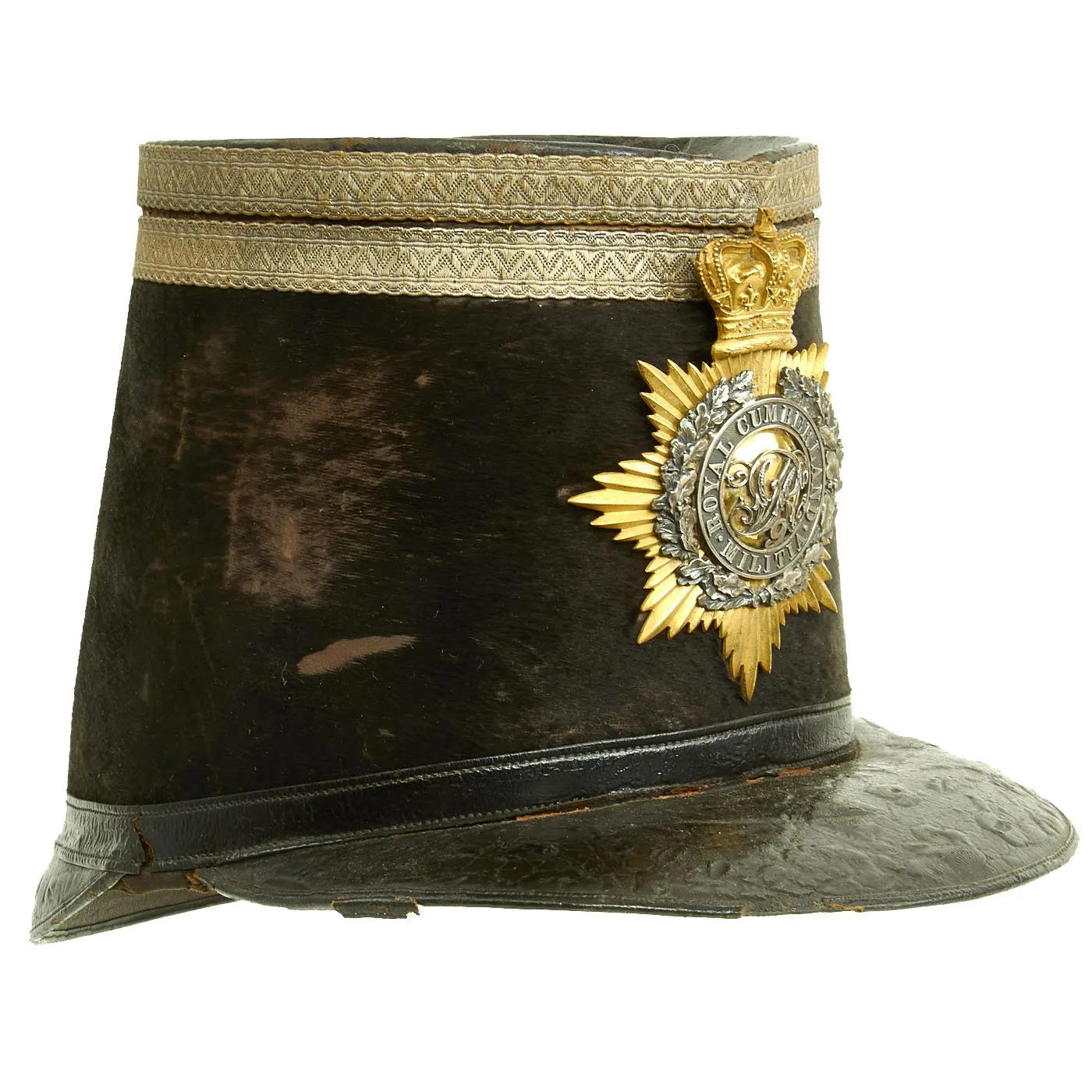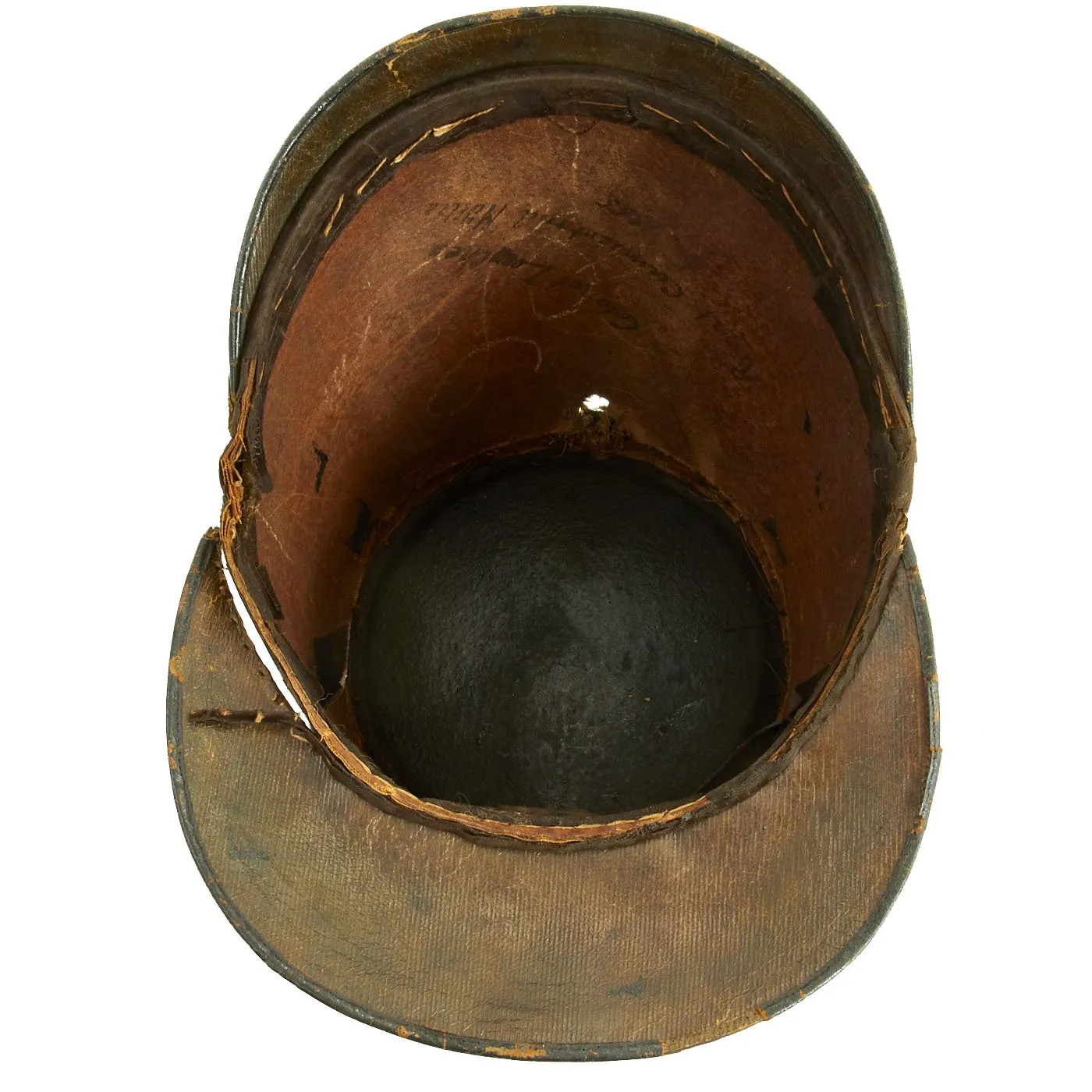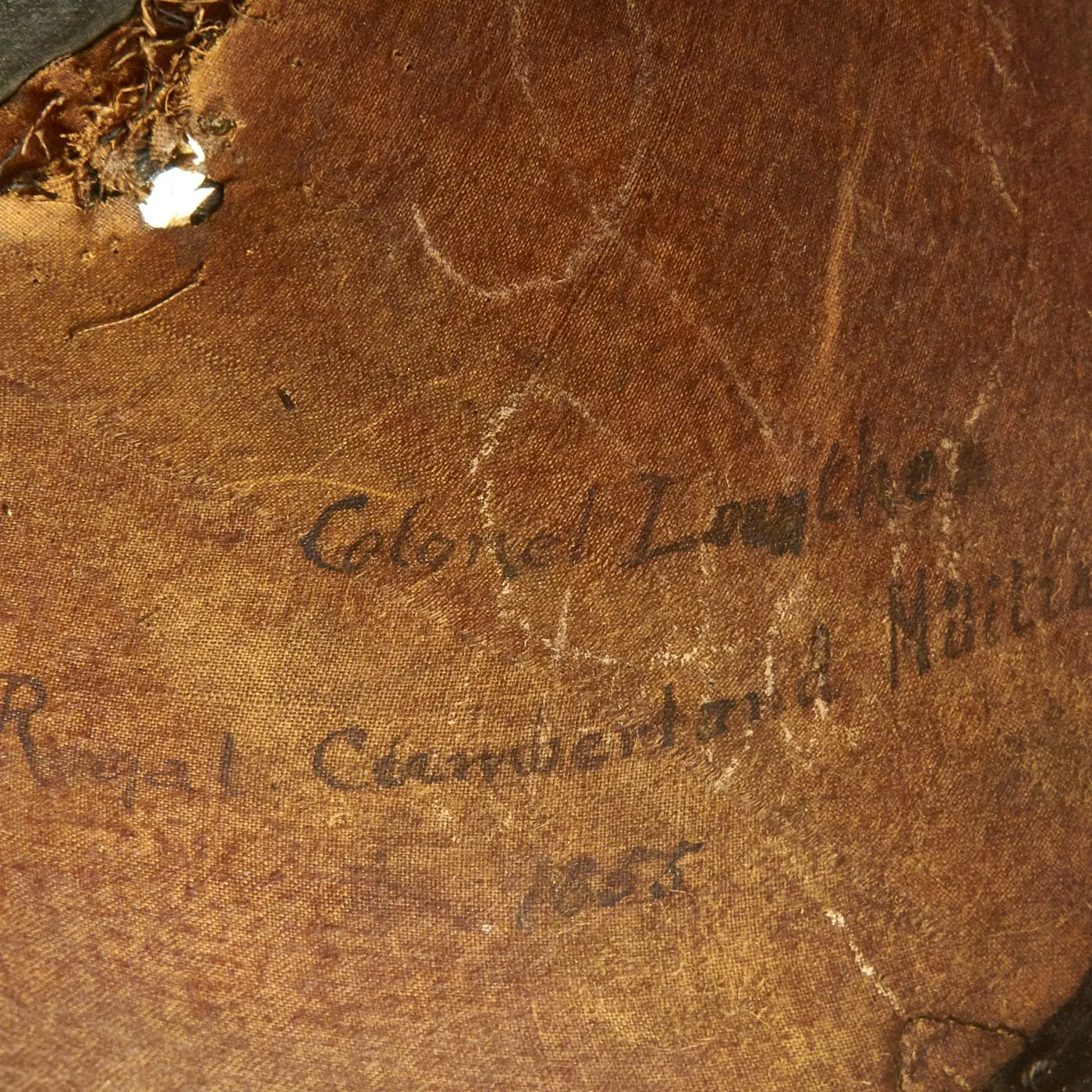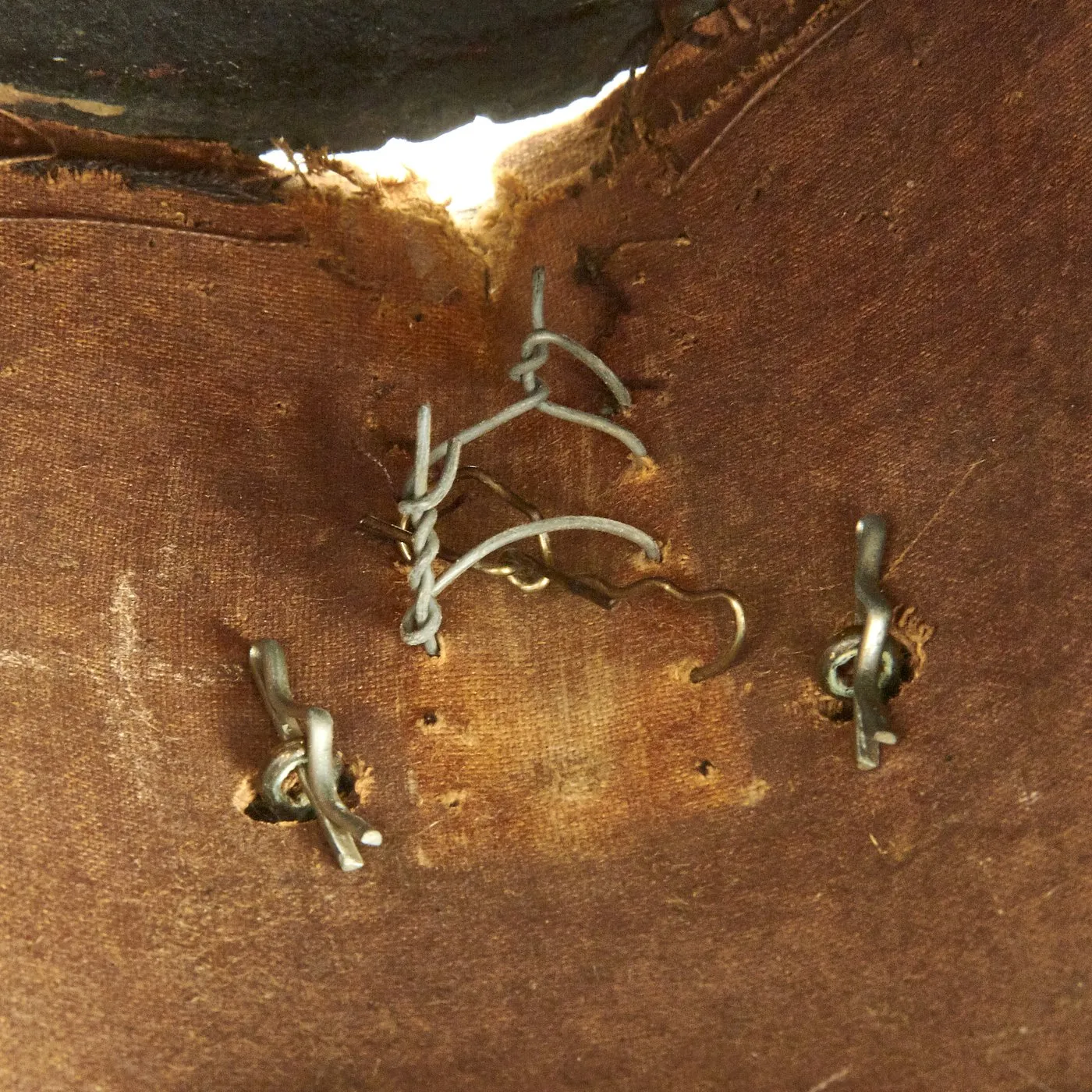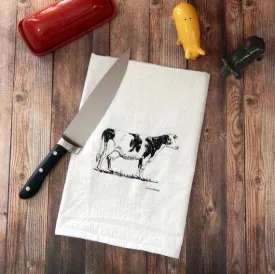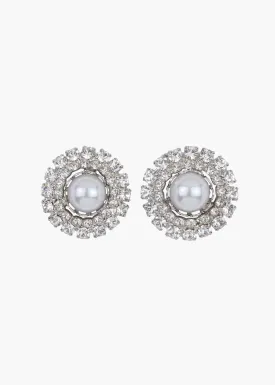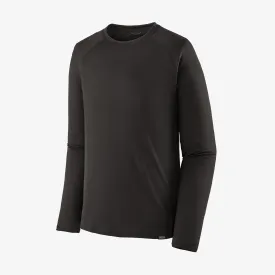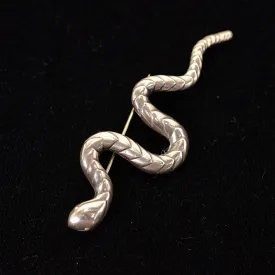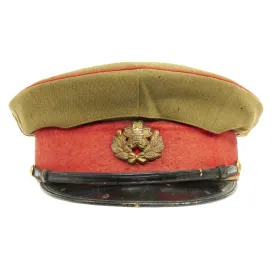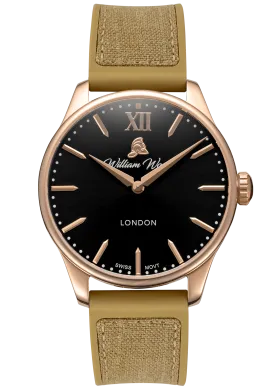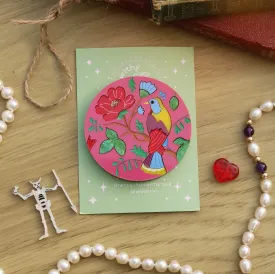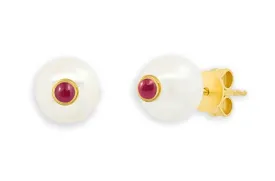Original Item; Only One Available. Here we have a lovely Victorian Militia Officer's Tschako, right from the Crimean war Era, named to a specific officer in the Royal Cumberland Militia. This tschako is more "pipe" shaped than later versions used, which had more of a sloped shape to the back. It is made from leather and fur covered fiberboard, and has a lovely 8 pointed star badge on the front, with a Queen's Crown on the top. On this is mounted the badge of the ROYAL CUMBERLAND MILITIA, with a VR in the middle above a number 9, for the company in the militia.
The inside of the helmet is unfortunately missing most of the original liner, but there is a written in message on the rear:
Colonel Lauther
Royal Cumberland Militia
1855
It is possible that the name is actually "Lowther" or something similar, as that part of the writing is not clear. Definitely some great research potential.
Condition of the cap is good, but definitely delicate. Definitely only suitable for displaying on a shelf. A great and rare named example, ready to add to your collection!
History of the shako-
The word shako originated from the Hungarian name csákós süveg ("peaked cap"), which was a part of the uniform of the Hungarian hussar of the 18th century. Other spellings include chako, czako, schako and tschako.
From 1800 on the shako became a common military headdress, worn by the majority of regiments in the armies of Europe and the Americas. Replacing in most instances the light bicorne, the shako was initially considered an improvement. Made of heavy felt and leather, it retained its shape and provided some protection for the soldier's skull, while its visor shaded his eyes. The shako retained this pre-eminence until the mid-19th century, when spiked helmets began to appear in the armies of the various German States, and the more practical kepi replaced it for all but parade wear in the French Army. The Imperial Russian Army substituted a spiked helmet for the shako in 1844-45 but returned to the latter headdress in 1855, before adopting a form of kepi in 1864. Following the Franco-Prussian War of 1870, military fashions changed and cloth or leather helmets based on the German headdress began to supersede the shako in many armies.
Although the mid-nineteenth century shako was impressive in appearance and added to the height of the wearer, it was also heavy and by itself provided little protection against bad weather as most models were made of cloth or felt material over a leather body and peak. Many armies countered this by utilizing specially designed oilskin covers to protect the shako and the wearer from heavy rain while on campaign. The shako provided little protection from enemy action as the most it could offer was in giving partial shielding of the skull from enemy cavalry sabres




